Wondering how to put more into your mindfulness practice? I’m talking about the benefits of a mindfulness practice and how to incorporate more mindfulness into your day.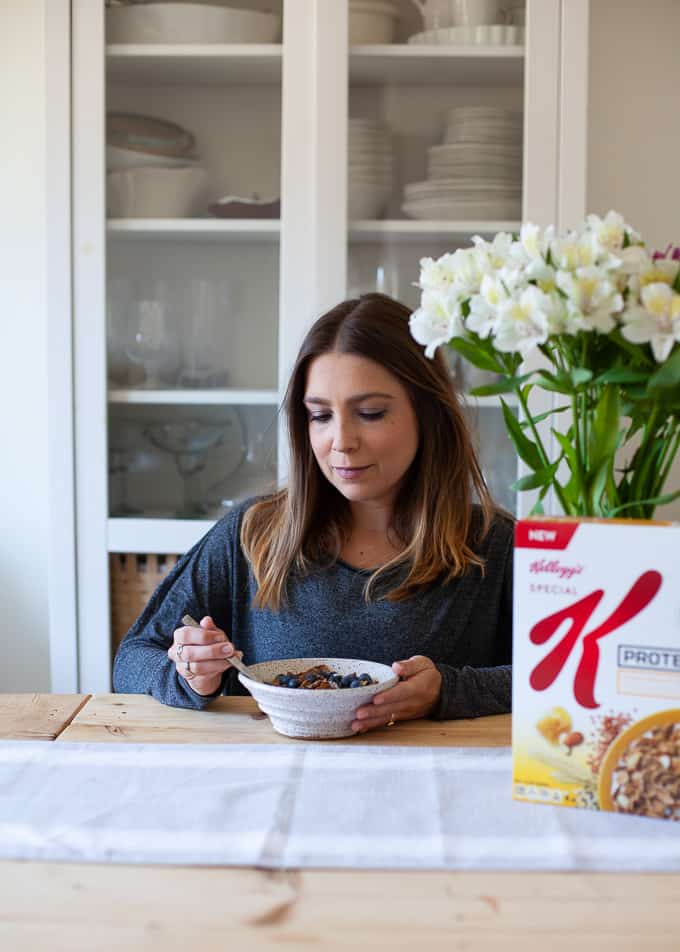
This post is sponsored by Special K Protein. Thanks for supporting the brands that make TFD possible. As always, opinions are my own!
What is your more? That thing you want more out of? That thing you want to put more into? These past few months I’ve talked about my more. I want to get more out of my breakfast. I want to put more into my business. And today, I’m talking about how I want to put more into my mindfulness practice.
What Is Mindfulness?
Mindfulness is making a conscious decision to pay attention to what’s going on in your mind without criticizing what comes up.
Benefits of Mindfulness
So, you might be asking yourself, but WHY would I want to pay more attention to what’s going on in my mind?!
I hear you, and you’re not alone. Most people try to distract themselves from being alone with their thoughts. As humans, we have an inherent negativity bias, so we’re wired to focus and ruminate on the negative and let the positive quickly fade away. Perhaps that is why we don’t like being present with our thoughts, because they tend to be negative!
Well, what if I told you there was a practice that helped you to not give your thoughts so much weight? What if there was a practice that helped you change your relationship with your thoughts?
Yep, spoiler alert: it’s mindfulness.
Mindfulness has been gaining a lot of attention over the past five years in the media, among psychotherapists and in scientific literature. Research studies have pointed to the following improvements associated with practicing mindfulness:
• Self-control
• Objectivity
• Flexibility
• Equanimity
• Concentration/mental clarity
• Attention regulation
• Body awareness
• Emotion regulation and tolerance
• Ability to relate to self and others with kindness, acceptance, and compassion
There is also research that shows that meditation can actually change the composition of your brain (wild, right?!). Following an 8-week mindfulness-based program, participants had increases in the concentration of grey matter in regions of the brain associated with learning, cognition, memory, emotional regulation, empathy, and compassion; whereas the amygdala region, associated with anxiety, fear and stress, got smaller. Mind. Blown.
Reduced anxiety? Increased compassion? Improved mental clarity? SOLD. But guess what? You gotta do the work. And mindfulness is an ongoing practice, not one you can just arrive at one day and hang out comfortably at.
And with all these benefits, you can see how mindfulness can improve your health. Often times we focus so much on nutrition and exercise as components of physical health that we forget about our mental and emotional health. If we widen the lens from which we view health, we can start to prioritize behaviors like mindfulness that will benefit other aspects of our health.
How to Practice Mindfulness
There is a myriad of ways to practice mindfulness, from formal and structured to more fluid and spontaneous. Check out some of these practices below and discover which ones may fit your lifestyle best!

Meditation app
I am one of those people that has a really hard time sitting down to meditate with no direction or prompts whatsoever. I easily get distracted, bored, fall asleep, you name it. Meditation apps, however, have totally changed the meditation game for me. They inspire me to sit down for a set period of time and just be.
I also love them because you can choose a meditation depending on your specific needs at that moment in time. For example, if I have a night where my mind is racing, I will put on a sleep meditation to play when I get into bed and 9 times out of 10, I’m zonked before it’s over. There are meditations for combating anxiety, harnessing loving-kindness, self-compassion, tolerating uncertainty, coping with grief, you name it.
Another reason I love meditation apps is because they can give you some accountability to practice. Some meditation apps have features that will track how many days in a row you’ve meditated and as someone who likes to see tangible progress, it helps motivate me to carve out time to sit.
Eating breakfast
Breakfast is the perfect time of day to practice mindfulness. When you practice mindful eating, you’re more likely to tune into feelings of hunger, fullness, and satisfaction, and to stop when you’ve had enough. And since breakfast sets the stage for the day, this is the perfect meal to practice mindful eating at, so you can carry that feeling of presence with you throughout the day. Mindful eating can also help enhance the satisfaction of our meals (aka can make food taste better!) and can help to support healthy digestion.
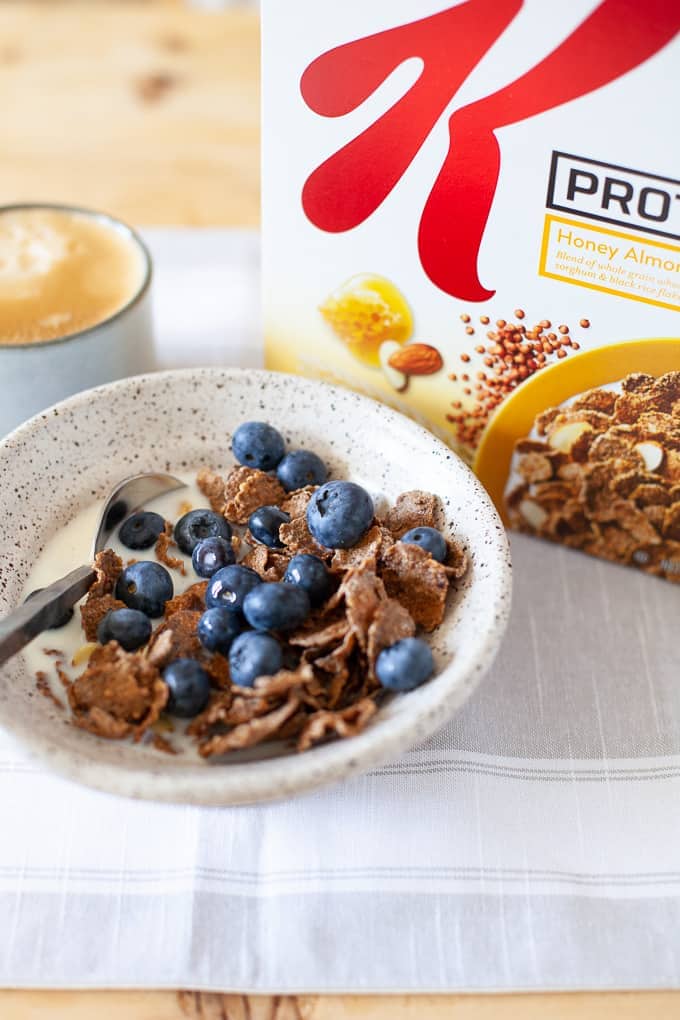
To practice mindful eating at breakfast, begin by engaging all of your senses: sight, smell, taste, touch, and sound. Notice the appearance of the food on the plate – taking note of any colors, shapes, and textures. Notice the aroma of the food. Take time to chew with your eyes closed so you can enhance the experience of taste. And lastly, notice any sounds. Perhaps it’s the sound of the crunching of cereal or the sound of your spoon dipping into your bowl of cereal with milk. Engaging all of these senses helps you to be more present for the experience of the meal.

Check-in with yourself halfway through your breakfast. Where is your hunger/fullness on a scale of 1-10? How satisfied are you? Just take a moment to check-in with how your body feels. This will help you to be present for how you are feeling during the meal.
When you’re done with your breakfast, practice acknowledging a sense of gratitude for the meal you had and for how it will help fuel you during the day.
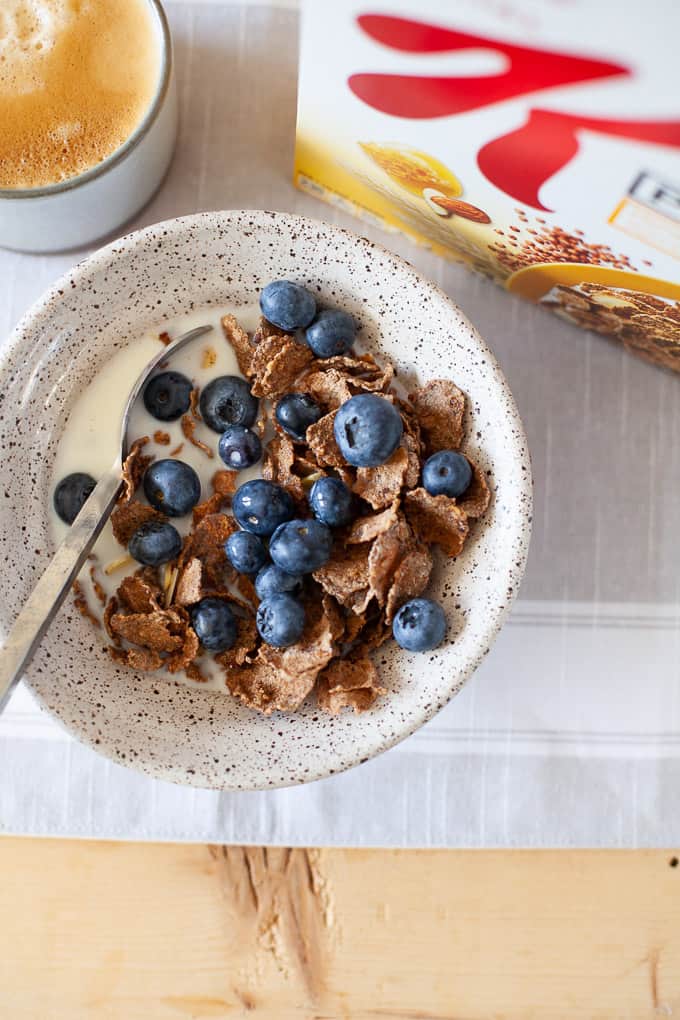
I am grateful for my mornings that start with a bowl of Special K Protein Honey Almond Ancient Grains because it now has more with a nutrient bundle to help protein do its job (lookin’ at you, magnesium, calcium and vitamin D!). With 15 grams of protein per serving, it helps to support lean muscle and strong bones. Getting more from my breakfast helps fuel me to put more into my mindfulness practice. And breakfast allows me the opportunity to practice mindfulness!
Going for a walk
Did you know that you can practice meditation while walking? It’s true, walking meditation is a thing! So, the next time you head out the door to walk the dog or to just take a leisurely stroll, see if you can use it as an opportunity to practice mindfulness.
Notice the sights around you – shapes, colors, shadows, light. Observe any sounds – wind blowing through the trees, cars whizzing by, birds chirping – without any judgment or labeling. Notice the experience of your feet hitting the ground with each step you take. Notice how your arms move through the air as you walk.
Try to approach this walk as if you had no destination, no agenda, no time limit, you’re just focusing on the sensations. As thoughts cross your mind (as they will!), gently try to bring your attention back to the feeling of your feet on the ground.
You can do this in your home, walking down the street, or my personal favorite, in a park surrounded by nature.
Daily tasks
This is another wonderful strategy if you’re not one for structure and formality. People are often surprised to hear that you can practice mindfulness any time of day with any task at hand. You don’t have to be sitting on a pillow with your legs crossed. You don’t have to be in a yoga studio. You simply can be washing the dishes. Or vacuuming the rug. Or making the bed.
Whatever task it is that you’re engaging in, aim to be fully present for it. Rather than distracting yourself with music or a podcast or letting your thoughts carry you away, focus solely on what is at hand. If you’re washing the dishes, notice the temperature of the water on your hands. Notice the sensation of suds touching your skin. Observe the sounds of dishes clanking. Notice the smell of dish soap or detergent.
Practicing mindfulness while engaging in daily tasks is a valuable way to incorporate mindfulness throughout your day.
Tell me, how can you put more into your mindfulness practice?
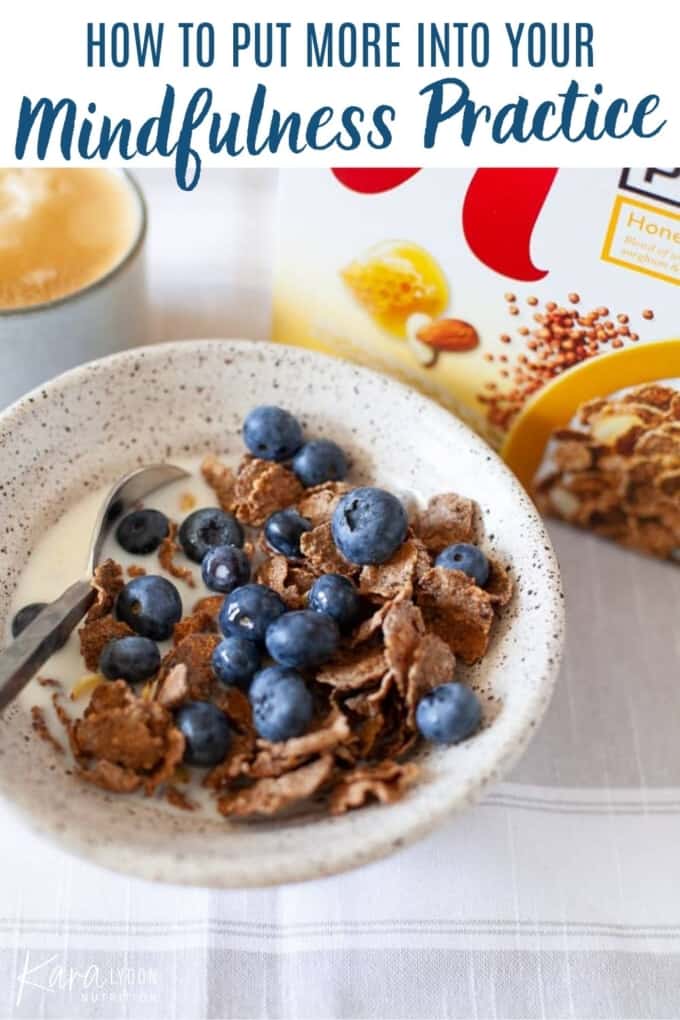


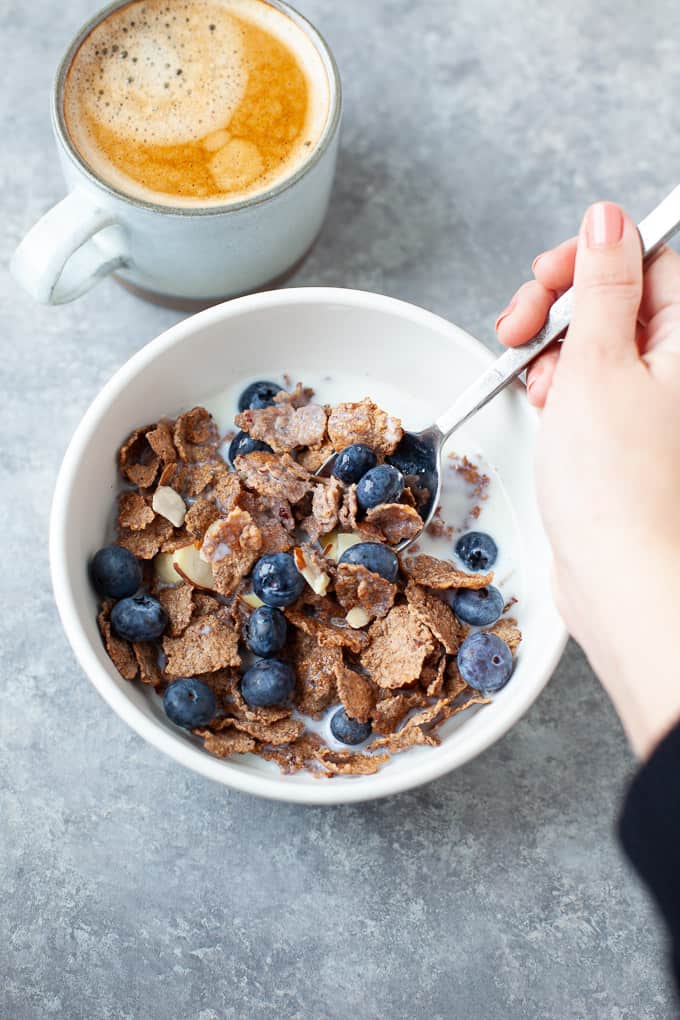


Such important info to share!
Thanks, Amy!
Agreed, thanks!
I’ve been so into cereal this pregnancy! Special K is a fave, too! Love all these great mindfulness tips, especially as you’re starting the day.
Such a great breakfast! Yes, a mindful morning definitely sets the stage for the entire day!
Mindfulness is such an important part of eating that we often overlook! Great tips!
I love that you promote mindfulness! It is truly a lost skill that we all can benefit from!
Mindfulness is always something I’m trying to put into more practice. Thanks for the tips!
Love it!
This is also something I am working on! I try to be mindful about enjoying my cup of coffee first thing.
Love that, Sarah!
This is always something I am working on! 🙂
Same! Mindfulness is a journey, not a destination, right?!
I love this topic and post Kara, you did a great job of laying out easy ideas for everyone to create their own mindful practices.
Thank you, Brynn!
Mindfulness provides a great opportunity to downshift and lower stress. Interesting enough, what I learned from social genomics is that stress impacts our gut health. If we can take the time to reduce stress whether that is through mindfulness or other forms of stress-reducing activities, we can also improve our gut when paired with quality nutrition.
Absolutely! The gut brain and head brain are in constant communication with one another. A stressed out person is likely to have a stressed out gut!